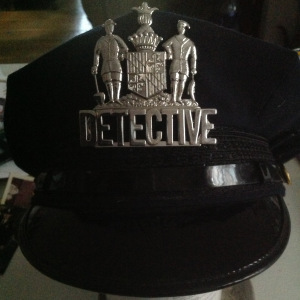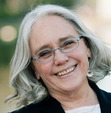Edith Maxwell's Blog, page 261
April 21, 2015
The Detective’s Daughter : Book ’em!
By Kim enjoying spring in Baltimore
I come from a family of readers. Whether it was The Sun, a case file, or a John le Carre
novel, the written word was present in our everyday life. My grandfather carried the sports page folded in the back pocket of his pants. Dad enjoyed pouring over his case notes with us at dinner, while Mom kept her nose firmly planted in the latest mystery she’d borrowed from the Enoch Pratt Library. I remember the first book I picked out on my own. It was at a tiny bookstore near Lexington Street, in the heart of the downtown shopping district. My Mom was buying a present for a friend and agreed to buy one book for me. I chose a collection of fairytales illustrated by Tasha Tudor. I still have it and read the stories to my own children. It was the beginning of 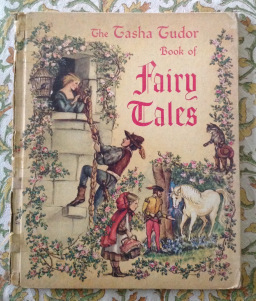 my love affair with Tasha Tudor and also became the first entry in what would become my book list obsession.
my love affair with Tasha Tudor and also became the first entry in what would become my book list obsession.
For more years than I care to count I have kept a notebook with lists of books that I have either read or wish to read. Several list contain many of the same titles. There was a time – before having children – I categorized my list in very specific genres. Mystery headed the column that included cozy, thriller, procedural, super natural and true crime. Even self-help was broken down to numerous categories. Obviously, I needed a lot of help or at the least, something better to occupy my time. Think of all the books I could have read instead of writing their titles on a list!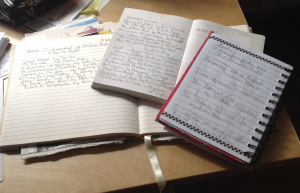
The one list I should have worked on, and never did, was that of people who borrowed my books. There are quite a few books I’m sure I will never see again. For the last year I’ve been part of a book club that meets once a month. We’ve read some wonderful stories, many of them I would never have chosen. A few of the books have been on one of my lists and it gives me great satisfaction crossing that title out.
This year I have begun a new journal. It’s really my first official book journal in a fancy notepad and not just some loose leaf paper haphazardly stapled together. I now rate the books I read with stars and leave spaces for comments. I enjoy talking about books and especially enjoy reading blogs such as Dru’s Book Musings. This summer’s goal, at least one of them, is to read the forty books Ramona DeFelice Long recommended on her blog during her forty days of women authors. I am nearly finished reading the nominees for the Agatha Awards to be given at Malice Domestic this year. Two of our own Wickeds, Sherry and Edith, are up for best first novel and best short story.
I leave you now gentle reader as I head out to my sunny porch to put a dent in yet another book, and I would like to know what kind of lists you keep. Do they serve as inspirations or as yet another chore?
Filed under: The Detective's Daughter Tagged: Baltimore City, Baltimore City Police, Dru's Book Musings, Enoch Pratt Library, Malice Domestic, Tasha Tudor, The Detective's Daughter

April 20, 2015
And the winner is…
We have so much fun with our Stick with the Wicked Contests! It started two years ago when Liz couldn’t go to Malice with the rest of us. Then I got to go with the Wickeds (on a stick) to Bouchercon in Albany. When we realized we’d all be at Crime Bake the contest was born. Our first winner was Barb Goffman, followed by Reine Carter and Dru Ann Love. Who will it be this year? Drum roll please!
First we pulled out the trusty Boston Red Sox hat.
Then we fill it with the names of everyone who entered.
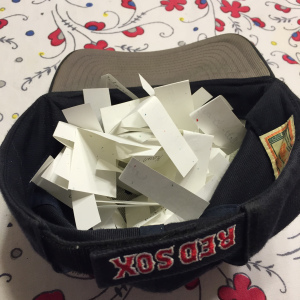 We get a third, non-interested party to pull the name.
We get a third, non-interested party to pull the name.
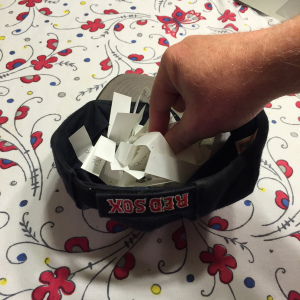 And finally the suspense is over!
And finally the suspense is over!
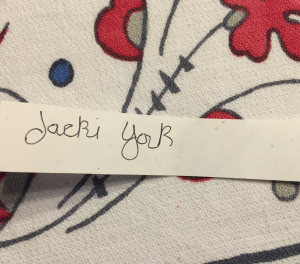 Congratulations, Jackie York! Jackie, go to the Malice Domestic website and pick the five authors (not including the Wickeds) you’d like a photo with and autograph from. We will make every attempt to track that person down. Please contact Jessie at jessie@jessiecrockett.com for further details.
Congratulations, Jackie York! Jackie, go to the Malice Domestic website and pick the five authors (not including the Wickeds) you’d like a photo with and autograph from. We will make every attempt to track that person down. Please contact Jessie at jessie@jessiecrockett.com for further details.
Filed under: Contests Tagged: Malice Domestic, Stick with the Wickeds

April 17, 2015
Welcome Back, Kate Flora!
by Barb, who is currently serving on a jury in a criminal case
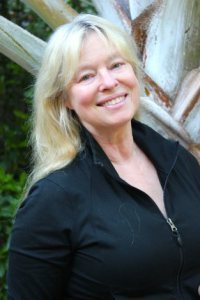 When Kate Flora visited us back in July, she was here to talk about her short story, “Girls Night Out” published by the new venture Shebooks.
When Kate Flora visited us back in July, she was here to talk about her short story, “Girls Night Out” published by the new venture Shebooks.
Now Kate’s back to talk about Death Dealer, her true crime book, which has been nominated for an Agatha Award for non-fiction.
Here’s the description of Death Dealer: How Cops and Cadaver Dogs Brought a Killer to Justice.
Death Dealer is a gripping true crime story of committed investigators from two countries and their cooperation in the relentless pursuit of a brutal murderer. It’s intriguing from the moment David Tanasichuk reports his wife, Maria, missing. Explaining the ten-day delay in notifying authorities, David claims that he and Maria were having marital troubles and she had decided to take a break by leaving town. Suspense builds as lie after lie unravels. David’s reputation for violence and drug abuse makes investigators take his veiled threats against them seriously.
Local police, frustrated by a fruitless wintertime search through miles of frozen wilderness, finally enlist the aid of Maine game wardens along with cadaver dogs and their dedicated volunteer handlers. This Law and Order meets CSI drama culminates in a riveting courtroom drama.
Barb: Welcome back, Kate. Your previous true crime book, the Edgar-nominated Finding Amy, scared the stuffing out of me, and not only because I had a daughter who was Amy St. Laurent’s age when I read it. After you finished that book, you vowed, “never again.” What was so compelling about the story behind Death Dealer that you broke your promise?
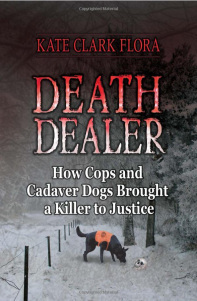 Kate: What I realized, a year or so after finishing Finding Amy and vowing never again, was that the writing life is a very solitary one, while the researching life, particularly when it involves a lot of contact with experts, can be interactive and fascinating. At the launch party for Finding Amy, the Maine warden lieutenant, Pat Dorian, had said, “So, when you’re ready, Kate, I have another one for you.” So I called him up and asked him to tell me about the case.
Kate: What I realized, a year or so after finishing Finding Amy and vowing never again, was that the writing life is a very solitary one, while the researching life, particularly when it involves a lot of contact with experts, can be interactive and fascinating. At the launch party for Finding Amy, the Maine warden lieutenant, Pat Dorian, had said, “So, when you’re ready, Kate, I have another one for you.” So I called him up and asked him to tell me about the case.
That led me on a series of hellish drives up to northeastern New Brunswick, Canada, but the people there were so open and welcoming, and I was quickly convinced, as with Amy St. Laurent, that Maria Tanasichuck’s story—and the story of the officers dedicated to getting her justice—really mattered.
Then I had a conversation with a New York agent who specialized in true crime, and when I told him the story, including the part where the bad guy starts stalking the police and their families, he said I should go find a better story, that no one was going to be interested in reading about a small town Canadian crime. Stubborn Yankee that I am, that was all it took to ensure I’d write the book.
Barb: Death Dealer is the story of the search for Maria Tanischuk’s body and the Maine Game Wardens and cadaver dogs who aid the Canadian authorities. What was the most surprising thing you did to research this book?
Kate: Good question. Certainly among the things that were new and different were:
Hiding in the mosquito-filled spring woods on a cadaver and search dog training, waiting to be found. Luckily, I only had to be lost. I didn’t have to be a cadaver.
Driving an ATV deep into the Canadian woods to view the spot where Maria’s body was found. First time on an ATV. We’ll skip the part involving the emergency room.
Going on a stake out with the Miramichi police, and being the one to spot the thief.
Barb: And on the flip side, what is the most surprising thing you learned as you researched this book?
 Kate: I’m not sure you’d call it surprising, but what I learned was that you can have a whole room full of interviews, and criminal records, and photographs, and data, but it still takes storytelling skills to figure out how to present that in a way that will make people want to read the book, care about the characters, and keep turning the pages. So what did I learn? I learned that writing fiction has taught me a great deal about how to write nonfiction, and I learned that spending time in the real world of crime and law enforcement has helped me make my police procedural fiction deeper and more authentic.
Kate: I’m not sure you’d call it surprising, but what I learned was that you can have a whole room full of interviews, and criminal records, and photographs, and data, but it still takes storytelling skills to figure out how to present that in a way that will make people want to read the book, care about the characters, and keep turning the pages. So what did I learn? I learned that writing fiction has taught me a great deal about how to write nonfiction, and I learned that spending time in the real world of crime and law enforcement has helped me make my police procedural fiction deeper and more authentic.
Barb: You write both fiction and non-fiction. I’m sure you could write a book about the differences, but I wonder about your mindset. In a nutshell, as you go to your desk every day, what is the difference between making stuff up and uncovering the truth? What is similar?
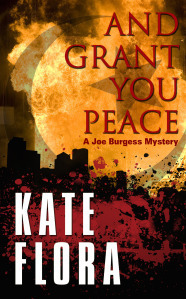 Kate: What is different? That in writing fiction, I control the characters. I shape them, I give them voices, I direct their actions. In writing nonfiction, I have to learn who the characters are and show them to a reader. It sounds simple. But when you know that real people will be reading the book, it creates a lot of pressure.
Kate: What is different? That in writing fiction, I control the characters. I shape them, I give them voices, I direct their actions. In writing nonfiction, I have to learn who the characters are and show them to a reader. It sounds simple. But when you know that real people will be reading the book, it creates a lot of pressure.
What is similar? Either way, I have to make the reader care. I have to make the reader see, feel, inhabit the story. Because either way, it’s storytelling.
Barb: What are you working on now?
Kate: Well…I’m doing the happy dance right now because another one of my nonfiction projects—a collaboration with a retired Maine game warden on his memoir, has just sold. Another fascinating adventure in the world of law enforcement, A Good Man with a Dog is the story of a challenging twenty-five year career in a job where everyone carries a gun. It’s got animal stories, and fishing stories, and amazing search and rescue stories, and cadaver dog stories, and cadaver dogs finding crime victims. And it is the deeper story of how what we ask of our public safety personnel can inflict damage on the people who serve and protect us.
So I’m back to saying: No one had better call up and say, “When you’re ready, Kate, I’ve got another one for you.” But someone will.
Meanwhile, I am writing the next Joe Burgess, And Led Them Thus Astray, and flipping out e-mails to my police advisers constantly, asking questions like: What kind of a rifle would the bad guy use?
Thanks for visiting, Kate. And congratulations on selling the new true crime!
Readers, true crime or no? Writers, anyone out there who, like Kate, writes both?
Filed under: Guest posts

April 16, 2015
The Social Media Conversation
 Earlier in the week, a blog about self promotion for writers made the rounds. It was titled “Please Shut Up: Why Self Promotion By an Author Doesn’t Work”. I’ll give you all a minute to read it. Go ahead, click over.
Earlier in the week, a blog about self promotion for writers made the rounds. It was titled “Please Shut Up: Why Self Promotion By an Author Doesn’t Work”. I’ll give you all a minute to read it. Go ahead, click over.
Are you back? OK, here’s my issue with the post.
Social media isn’t marketing. Sure, it can be used for marketing. But social media is a tool of engagement. Conversation. Connection.
Yes, Facebook tries to monetize. No, using Instagram may not lead to direct book sales. I know–Klout scores on Twitter don’t translate to your place on bestseller lists, would that they did. Goodreads is a place for readers, not necessarily for authors. Pinterest is a blast, but does anyone buy anything from it? You can use all of these tools, and they may not sell a book.
Frustrating isn’t it?
Or is it? Facebook is the grandfather of all of this, and it just turned ten years old. Ten. We are still at the beginning of all of this technology, and figuring out what it can do. And how best to use it. I am an early adopter, and have tried out most platforms. Some of them I like, others I don’t. But you’ll never hear me say “I don’t see the point of it.”
The point is to connect with like minded people. What connects you could be a friend, an interest, a passion, a complaint, a hobby, an election, a sports team, or an author. Different platforms foster those connections in different ways, but that’s the point.
Of course, you can use social media for marketing. But not for marketing alone. Think of it like a big cocktail party. You are talking to one person, and all they are doing is talking at you, about what they want to talk about. How fast do you run across the room? How about the person who asks about you, who has a few shared interests, who is pleasant to be around, and who you feel connected to?
Some of my thoughts on using social media well:
Be kind as your default. Always.
90% of your use shouldn’t be about you at all. It should be sharing articles, supporting friends, having conversations, connecting. The other 10% can be a soft sell. But even that should be conversational.
Never beg for sales, for likes, for shares.
Don’t push. (The point that I agreed with in that blog post.)
If you don’t like a platform, don’t use it. There are a lot of choices out there, so there’s room for everyone.
Remember, it isn’t all about you. Ever.
Social media is in its infancy. I think it’s wonderful, and helps keep me connected to a lot of people in my life. Some of them will buy my book, but most of them won’t.
And that’s fine.
Filed under: Uncategorized Tagged: Facebook, Instagram, Pinterest, social media, Twitter

April 15, 2015
Wicked Wednesday- First Cars, Favorite Rides
Jessie: In NH luxuriating in a spring heat wave!
The arrival of spring in New England fills the roads with motorcycles, convertibles and antique automobiles of all sorts. Which got me thinking about first cars and favorite rides. So Wickeds, what was your first car? What about a favorite vehicle?
Liz: My first car was kind of lame – a Chevy Cavalier. My parents picked it out, what can I say? Now that I’m in charge, I’m totally a Volkswagen girl. Love my Jetta.
 Sherry: My first car was an old car my parents gave me in the late seventies, after letting me drive it during most of my high school years and on and off in college. It was a 1965 Rambler that a friend nicknamed “Rodney”. I drove it to Grand Junction, Colorado in 1981 when I moved there. I kept it another two years before finally selling it. Part of me believes that car is still on the road somewhere.
Sherry: My first car was an old car my parents gave me in the late seventies, after letting me drive it during most of my high school years and on and off in college. It was a 1965 Rambler that a friend nicknamed “Rodney”. I drove it to Grand Junction, Colorado in 1981 when I moved there. I kept it another two years before finally selling it. Part of me believes that car is still on the road somewhere.
The picture above is from my high school year book. I was editor in chief my senior year so Rodney became a prop for one of the photos. My favorite car was the Cutlass Supreme my family bought when I was in high school. It was hot and fast. I got to drive it on occasion but usually it was Rodney and me.
Jessie: I had a Ford Tempo as a first car and I loved it. It had a sunroof, and a leather wrapped steering wheel. It was a standard and I loved working my way up and down through the gears. I liked it so much I’ve chosen standards every time it has been an option since, including my current favorite, a little red Mini Cooper.
Edith: Ah, fond memories. I was a pump jock and apprentice mechanic at Lockhart’s  Mobil on Coast Highway in Newport Beach, California, with my freshly minted BA in linguistics. I saved up my money and bought a 66 bug very much like this one for $600. I did all the repairs myself, including once putting a fan belt on too tight and nearly burning up something or other. Still love the sound and feel of a good old analog engine. I’m with you, Jessie, on manual transmissions. The first automatic I’ve ever owned is my current Prius, and that’s only because they don’t make them with a stick shift. Favorite? I love getting mpgs in the high 50s with my current ride, but I also loved my 1970 Volvo sedan that I bought in 1980. The trunk was infinitely large, and the huge steering wheel made me feel like I was driving a bus, even though I had to sit on two pillows to see over it.
Mobil on Coast Highway in Newport Beach, California, with my freshly minted BA in linguistics. I saved up my money and bought a 66 bug very much like this one for $600. I did all the repairs myself, including once putting a fan belt on too tight and nearly burning up something or other. Still love the sound and feel of a good old analog engine. I’m with you, Jessie, on manual transmissions. The first automatic I’ve ever owned is my current Prius, and that’s only because they don’t make them with a stick shift. Favorite? I love getting mpgs in the high 50s with my current ride, but I also loved my 1970 Volvo sedan that I bought in 1980. The trunk was infinitely large, and the huge steering wheel made me feel like I was driving a bus, even though I had to sit on two pillows to see over it.
Julie: My first car was a Ford Escort, inherited from my grandmother. I drove it into the ground, but was in my 30’s when I inherited it, and have only had one car since, my Scion xB, which I adore. (I live in the Boston area, and use my feet and the T for my primary transport.) My 10 year old Scion just hit 40,000, so I suspect this might be it for a while.
 Barb: My first car was not even really mine. It was an ancient Ford Falcon that my grandfather left at the train station from Monday morning until Thursday night when he returned from Manhattan to my grandparents’ summer home in Water Mill, Long Island. In the summer of 1974, I lived with them , and I got the use of the car as long as I dropped him off and picked him up at the train. The Ford was ancient even then (see the rust) and had no power steering. When I went to see my boyfriend in Boston (now my husband), I would take two small ferries that went to and from Shelter Island. The ferrymen, who got used to seeing this college girl in the old beater, delighted in having me park it in the most impossible spots on the boat. They thought it was hilarious to watch me grapple with the wheel. My favorite car was the same grandparents 1958 Thunderbird. White with real leather seats in white and aqua. When Bill and I were in Cuba in 2013, I got to ride in one again. A real trip down memory lane.
Barb: My first car was not even really mine. It was an ancient Ford Falcon that my grandfather left at the train station from Monday morning until Thursday night when he returned from Manhattan to my grandparents’ summer home in Water Mill, Long Island. In the summer of 1974, I lived with them , and I got the use of the car as long as I dropped him off and picked him up at the train. The Ford was ancient even then (see the rust) and had no power steering. When I went to see my boyfriend in Boston (now my husband), I would take two small ferries that went to and from Shelter Island. The ferrymen, who got used to seeing this college girl in the old beater, delighted in having me park it in the most impossible spots on the boat. They thought it was hilarious to watch me grapple with the wheel. My favorite car was the same grandparents 1958 Thunderbird. White with real leather seats in white and aqua. When Bill and I were in Cuba in 2013, I got to ride in one again. A real trip down memory lane.
Readers, how about your firsts and favorites?
Filed under: Wicked Wednesday Tagged: 1958 Thunderbird, 1966 VW bug, 1970 Volvo, Chevy Cavalier, favorite cars, favorite vehicles, first cars, Ford Falcon, Ford Tempo, Jetta, Prius, Rambler, Volkswagon

April 14, 2015
Setting a Place
Jane/Susannah here, whose dream of spring has finally come true…
 Hello, my Wicked Lovelies. Or are you Lovely Wickeds? It’s only been a month, but it seems like forever since I’ve posted. This coming weekend I’ll be giving a talk about cozy mysteries at the Mark Twain House and Museum in Hartford, Connecticut, as part of their 4th Annual Writers’ Weekend. (There are still tickets available, for the whole conference, individual days, and even individual classes. Click here for more information)
Hello, my Wicked Lovelies. Or are you Lovely Wickeds? It’s only been a month, but it seems like forever since I’ve posted. This coming weekend I’ll be giving a talk about cozy mysteries at the Mark Twain House and Museum in Hartford, Connecticut, as part of their 4th Annual Writers’ Weekend. (There are still tickets available, for the whole conference, individual days, and even individual classes. Click here for more information)
In putting together my presentation, I thought long and hard about what makes a mystery cozy. And I came to a conclusion that surprised me. Before I started my analysis, I would have said that the number one element of a traditional mystery is a relatable, likeable, mostly believeable heroine (or hero, if you want to be a rebel). After all, the reader is going to be spending quite a bit of time with that character, and doing the sleuthing right along with her, for several–hopefully many–books. I say mostly believable because really, how could any one person find that many bodies? But that’s why it’s fiction.
But by the time I’d thought longerer and harderer, I realized that setting is more important than the protagonist, more important even than the plot. Yup, you read that right. It seems to go against everything we’ve learned about craft as it relates to character-driven genre fiction, doesn’t it? But hear me out.
My Greek to Me Mystery Series is set in the Thousand Islands region of New York State. The area is distinctive, with its own natural beauty and cultural dynamic. I grew up there, so I know it well. It was a no-brainer for me to set my series there. But now that I’m examining the series more closely, mining it for material for my presentation, I’ve decided that anybody in my fictional town of Bonaparte Bay could solve a mystery, if I let her/him. There’s nothing so unique or special about my heroine, Georgie, that she’s the only person who could get to the bottom of whatever’s going on. This is fascinating to me. Georgie’s the sleuth we read about, and hopefully connect with, and yet, she’s sort of dispensible. I hope she’s interesting and well-drawn enough that readers want to learn more about her and follow her on her adventures through the series.
But the truth is, she can’t do her sleuthing without the foundation, the setting, propping her up. Take her out of Bonaparte Bay and put her in New York City, for example, and she’d have a tough time figuring out which subway line to take, let alone figuring out who killed that guy on the train and why. She can solve mysteries in Bonaparte Bay because she understands the community she lives in–her setting.
Likewise, the plot, which you might think would also be a candidate for Most Important Element of a Mystery, is also secondary to the setting. Because cozy mystery plots all hinge on one thing: they happen in the setting they do, because that’s the only place they can happen. That sounds like circuitous logic, but the fact is, in a cozy mystery, it’s almost always a character residing in the community who commits the crime. Often, it’s a member of the community who is the victim, though there’s more flexibility there to bring in an outsider. This is no accident. When the killer is revealed to be a member of the community to which the reader has grown attached, our sense of outrage, of betrayal, is heightened. But take those two characters, victim and killer, and move them to a different stage, and you have a completely different story.
How about another example? Think of the book Rebecca by Daphne DuMaurier (and if you have not read it–do so immediately!). That plot, that unnamed heroine, can only exist as they do because they are superimposed on the framework of Manderley, Max de Winter’s English estate. What about Wuthering Heights? Would that have been the same story if it had been set in London instead of the remote English moors?
Do you agree with me? Do you have to start with setting and build from there? Or can you create a cozy mystery sleuth and then place her in a setting?
Filed under: Craft, Jane's posts, Susannah's posts, Uncategorized Tagged: Feta Attraction, Greek to Me Mysteries, Rebecca, setting, Susannah Hardy, Thousand Islands, Wuthering Heights

April 13, 2015
Finding Ten Thousand Words
Edith here, nearly delirious with our warming trend, the vanishing of the last piles of snow,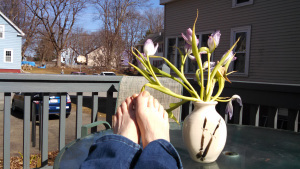 the ability to sun my tootsies, and all the little green things popping out of the ground. Must schedule a pedicure!
the ability to sun my tootsies, and all the little green things popping out of the ground. Must schedule a pedicure!
Before my surgery (which went very well, thank you, and from which I am healing alarmingly fast), I finished the first draft of Grilled for Murder, the second local foods mystery, due August 1. Unfortunately, it was about ten thousand words short of the minimum specified in my Kensington contract, 75000.
This often happens with my first drafts, which tend to be a bit, well, sparse, so I wasn’t too worried about it. Within a week of my surgery I found I could sit and type for extended periods, so I am back at work finding ten thousand words. How do I do that?
The easiest way would be to realize I needed five more scenes here and there, so I went looking. I did find one empty scene, which I had labeled Thursday Lunch. My note card for it read, “Bring Tanya back in. What happens?” Oh. That wasn’t very helpful. But I started writing, brought Tanya back in, and a day later had a nice 1200-word scene with several elements of suspense and suspicion, and which connected with something I’d already written that happens later that day.
1200 down, 8800 to go. I didn’t really see any other obvious gaps in the story, though. Back to that sparseness thing. I started reading through every scene to make sure I’d 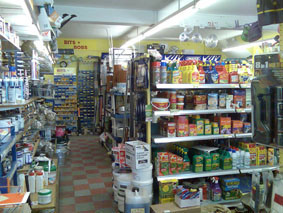 included at least several senses. What does the hardware store smell like? Did I describe how the air felt on Robbie’s skin during one of her long bike rides? What did the villain’s hair look like in the final action scene? How did Abe’s rabbit stew taste at the Hoosier Hollow restaurant? And so on. That process added a couple thousand words.
included at least several senses. What does the hardware store smell like? Did I describe how the air felt on Robbie’s skin during one of her long bike rides? What did the villain’s hair look like in the final action scene? How did Abe’s rabbit stew taste at the Hoosier Hollow restaurant? And so on. That process added a couple thousand words.
I went looking for fun southern expressions that a couple of my characters can use, and found some like “Well, butter my butt and call me a biscuit,” “Easier than sliding off a greasy log backwards,” and “He’s busier than a one-legged man in a butt-kicking contest.”
Another trend of mine is forgetting to have people reflect, especially my protagonists. A typical refrain from my critique group is, “Wouldn’t she be thinking about what happened in the last scene?” So I did a pass through looking for that. Another 500 words. Next I’ll check all the areas that Chris Roerden mentions in her excellent, Don’t Murder Your Mystery and see what else I can fix, and make sure I’ve tied off all the red herrings and subplots.
In the process of successive read-throughs and fixes, I’m up to 69,111, with plenty of time to go. I know after I hand it off to my brilliant and trusty editor, Sherry, for a pass before I send it to my editor at Kensington, she’ll find gaps in the story I need to fill, too. I’ll also need a trimming pass as well, of course, eliminating trite words and dull language.
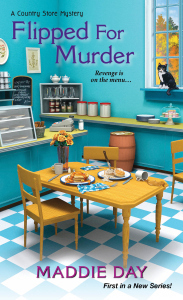 I know I’ll get to that magic 75000 words as I keep working on the story. If I’m a little short (hey, no jokes!), I don’t think they’ll mind too much. And remember, you can already preorder book one, Flipped for Murder!
I know I’ll get to that magic 75000 words as I keep working on the story. If I’m a little short (hey, no jokes!), I don’t think they’ll mind too much. And remember, you can already preorder book one, Flipped for Murder!
Readers, how do you achieve the quantity you need, in writing or elsewhere in your life? Other tips for fleshing out a story? Readers, would you rather see a short cozy or a longer one? And how’s spring by you?
Filed under: Edith's posts Tagged: Chris Roerden, Country Store Mysteries, Flipped for Murder, Maddie Day

April 10, 2015
Stick with the Wickeds Contest
Jessie: Welcoming flocks of robins back to New Hampshire
The Malice Domestic Conference is almost here. Since all the Wickeds are going to be able to attend, we are once again running a contest to take one of our readers with along with us, well, sort of.
 Last year we took Reine Harrington along with us on a stick. This year’s Guest of Honor is NYT Bestseller Charles Todd, the creator of the Bess Crawford novels and the Ian Rutledge books. If you would like to have the opportunity to have as much fun as Reine did last year, then this is the contest for you! Here’s how it works:
Last year we took Reine Harrington along with us on a stick. This year’s Guest of Honor is NYT Bestseller Charles Todd, the creator of the Bess Crawford novels and the Ian Rutledge books. If you would like to have the opportunity to have as much fun as Reine did last year, then this is the contest for you! Here’s how it works:
Just leave a comment on any of the blog posts scheduled between today and Friday, April, 17 to be entered into the drawing. If you are chosen as the winner all we’ll need from you is your photo in jpeg format and a list of five authors attending this year’s Malice Domestic Conference whose autograph you would like us to ask for on your behalf.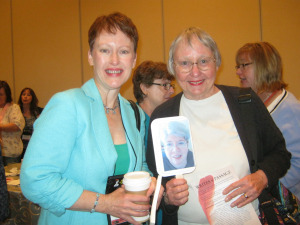
We’ll announce the winner on April, 20. Best of luck to you all!
Filed under: Contests Tagged: contest, Malice Domestic

April 9, 2015
Filling the Well
Jessie: Gleefully gazing at crocuses sprinkling the lawn!
 The snow is mostly melted and sooner rather than later, wells will be filled to the brim with the year’s supply of water, water that will be used to make things grow. Which got me thinking about the well of creativity and how that needs replenishing too.Creativity relies heavily on connecting and combining seemingly unrelated elements in new and unexpected ways. In order to make those combinations you have to have a lot of material floating around in the subconscious. Over the last few years I’ve come to realize how valuable it is to recognize when I am starting to run dry and how best to address the problem before it develops into a drought. Here are a few of my tried and true strategies:
The snow is mostly melted and sooner rather than later, wells will be filled to the brim with the year’s supply of water, water that will be used to make things grow. Which got me thinking about the well of creativity and how that needs replenishing too.Creativity relies heavily on connecting and combining seemingly unrelated elements in new and unexpected ways. In order to make those combinations you have to have a lot of material floating around in the subconscious. Over the last few years I’ve come to realize how valuable it is to recognize when I am starting to run dry and how best to address the problem before it develops into a drought. Here are a few of my tried and true strategies:
1. Take a long walk with a good friend. My favorite walking friend is one of my beloved sisters. We tool along country roads solving the world’s problems and many of our own as well. All that brainstorming and oxygen flow fires my creativity.
2. Try a new food. I’m a decent cook and I like experimenting with all sorts of recipes from around the world. New flavors are one way I like to awaken my senses and to enjoy some of life’s little surprises.
3. Map a new route to a routine destination. Ever wonder where a road goes? Ever turned left when you usually go right? Discovered a shortcut that you never realized existed? Shaking things up in the physical world can do the same for your mental map.
4. Make batch decisions. When I am writing a first draft and things are grinding along slowly I try to reduce as many decisions from my life as possible. The creative energy required to make decisions can leave too little left over for large-scale projects. In order to ration the supply I plan what I will wear, a menu for a week at a time and my schedule to the greatest extent possible. By eliminating the need to think about what to have for lunch or when to exercise I can turn more of my mind over to red herrings and plot holes.
5. Spend time pursuing another creative discipline. I love to knit. I always have at least two projects on the needles at any given time. I find the time I spend knitting does something to my brain that nothing else seems to do.I even keep a pair of needles and a ball of yarn on my desk most of the time to help me sort things out. Whenever I get to a sticking point in a draft I pick up the needles and fall into a sort of meditation mode. Ideas usually begin to flow once more. It works with other pursuits too like gardening or painting; anything so long as it doesn’t rely on the same set of skills as the main creative endeavor.
So readers, how do you refill your creative wells?
Filed under: Jessie's posts Tagged: creativity, decision making, knitting, writing

April 8, 2015
Wicked Wednesday — Festivals
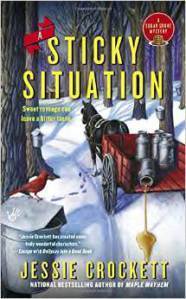 We continue to celebrate the launch of A Sticky Situation by Jessie! In the Sugar Grove, New Hampshire, the Greene family—including Dani’s irksome Aunt Hazel—are busy preparing for the annual Maple Festival. But nothing kills the festive spirit like murder…
We continue to celebrate the launch of A Sticky Situation by Jessie! In the Sugar Grove, New Hampshire, the Greene family—including Dani’s irksome Aunt Hazel—are busy preparing for the annual Maple Festival. But nothing kills the festive spirit like murder…
So Wickeds have you ever helped set up a festival? Do you have a favorite one?
Liz: I’ve never done a big festival like the Maple Festival, but last year I was part of a very cool Tea and Art Fair–an indoor wellness festival. It was fun to see the event come together and meet like-minded people. And thankfully, no one was murdered!
Julie: I have never set up a festival, but I have been part of organizing a few theater festivals in my day. There could be a cozy series on festivals alone. In fact, there probably is one! It is great to see like minds coming together for a shared purpose, as Liz said. But then there’s the egos. NEVER a dull experience.
Edith: Not festivals, but I have helped organize conferences, something Barb and Julie know quite a lot about with their experience co-chairing the New England Crime Bake. I worked on a couple of academic conferences long ago, and they included much wrangling of difficult egos. I’m excited to be on a panel at the Newburyport Literary Festival with Liz and Jessie at the end of April, with Leigh Perry (Toni L.P. Kelner) moderating. It’s a fabulous all-day festival, and this year I’ll be an author instead of an attendee. Honored.
Jessie: Every year my village holds a Fourth of July parade which culminates in activities in the park like performances by local bands and treats for the kids. One year the Friends of the Library organization put on a soda tasting. All the sodas were from local companies and the event was such fun. Participants bought a glass as a fundraiser for the library and used it to try samples of as many different soda flavors as they liked. Not surprisingly, there were a lot of happy kids there that day. One of my personal favorites was the Maple Cream soda by Squamscot Beverage Company.
Sherry: I haven’t ever organized a festival but I’ve attend some memorable ones around the country as we moved from place to place. The Sauerkraut Festival in Waynesville, Ohio — our daughter had just turned three and kept her fingers up her nose the entire time we were there because it was stinky. Stinky, yes, but the food was delicious — even the sauerkraut fudge. The National Book Festival in DC — I’ve been able to hear so many fabulous authors talk about their books. And though it’s small the Apple Festival in Bedford, Massachusetts is always a good time.
 Barb: I’ve never organized a festival, either. But I did get to “research” a few. Boiled Over ($1.99 for the ebook this month, btw) takes place over a fictional Founder’s Day Weekend in Busman’s Harbor, Maine. It is very, very loosely based on two festivals in Boothbay Harbor–The Fisherman’s Festival and Windjammer Days. Also to research Boiled Over, my husband and I traveled to the Wild Blueberry Festival in Machias, Maine. Oh, the sacrifices I make for my art!
Barb: I’ve never organized a festival, either. But I did get to “research” a few. Boiled Over ($1.99 for the ebook this month, btw) takes place over a fictional Founder’s Day Weekend in Busman’s Harbor, Maine. It is very, very loosely based on two festivals in Boothbay Harbor–The Fisherman’s Festival and Windjammer Days. Also to research Boiled Over, my husband and I traveled to the Wild Blueberry Festival in Machias, Maine. Oh, the sacrifices I make for my art!
Readers: Do you have a favorite festival or have you ever organized one?
Filed under: Wicked Wednesday Tagged: A Sticky Situation, A Sugar Grove Mystery, Apple Festival Bedford MA, Blueberry festival, boiled over, Boothbay Harbor Maine, Dani Greene, festivals, Fisherman's Festival, Leigh Perr, Machias Maine, Newburyport Literary Festival, Sauerkraut Festival Waynesville Ohio, The National Book Festival, Windjammer Days


